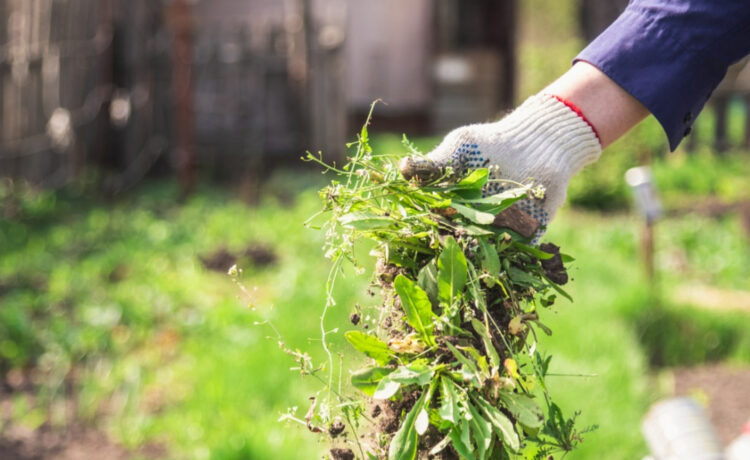Introduction
Managing the growth of weeds and eliminating them regularly is something that every gardener has to face. However, you can significantly control the sprouting of weeds in your garden by applying weed management techniques. For best results, we recommend you purchase new topsoil by searching “topsoil near me” and get rid of the old layer.
The soil contains innumerable seeds in a dormant state that can grow when the conditions become right. For instance, every time you plant new seeds, till the soil, rake it, or disturb it by pulling out weeds, it provides an opportunity for the dormant seeds to germinate. Now that you know what it is important to start with a fresh batch of topsoil, let’s dive into the interesting part and look at some important weed management strategies before you plant.
Monitoring and Analyzation
Monitoring and keeping records of the species of weeds that grow in a field are crucial for weed control and management success. You can analyze the records to have a big picture look at the hard to control weeds that grow and come up with a suitable strategy to control their growth.
In fact, once you know their timing, it can become easier to manage weed since larger weedlings are harder to kill than smaller ones. It can also allow you to strategize the timing of the weed management techniques mentioned below.
Stale Seedbeds
A great way to control weed growth is to pre-irrigate the dormant weed seeds, provide the conditions for proper germination, and then introduce conditions that prevent their growth, thereby killing the weed saplings within a few days. Most gardeners do this by tilling the seedbed as shallow as possible to cultivate only the seeds present in the upper layer of the soil and prevent disturbing the seeds in the deeper layers.
Once done, the seedbed is watered to encourage weeds growth and then covered with a silage tarp (black) that impedes light and water. The weeds that sprout from the seeds in a few days die due to a lack of photosynthesis and this creates a stale seedbed.
After three to four weeks, the tarps are removed to check the condition. Any surviving weedlings are removed by hand or destroyed by a flame weeder or through shallow cultivation. Once the weeds are removed, it is crucial to limit soil disturbance. For best results, the soil temperature and climate conditions should be similar to the crop germination period.
Soil Solarization
Soil solarization is the process of disinfecting the soil in high temperatures by laying a layer of clear plastic and trapping the sun’s heat, thereby killing weed seeds, disease-causing pathogens such as fungus, vegetative structures, and even insects.
Typically, soil solarization works great at killing annual weeds such as field bindweed, johnsongrass, and bermudagrass. However, it’s not that effective at killing perennial weeds or those with harder seed coats such as velvetleaf and mallow.
Normally, the use of plastic mulch is discouraged. However, the use of black plastic mulch is pretty common in commercial growers and home growers. Some growers prefer to cut holes and transplant the plants in them.
Suffocation
Suffocation is another method you can follow if you don’t want to use soil solarization or follow the tilling method. All you have to do in this method is to lay down a layer of suffocating mulch such as arborist wood, black plastic tarps, straw, shredded leaves, and other such materials.
Make sure the layer is about 4-6 inches deep and allow it to settle down over a period of few weeks. The best time to apply the layer is in early spring. To plant the transplants, you just have to make some in the layer and then recover it. Just make sure there is enough space around the plant for the stem to grow.
Cover Crops
Nowadays, cover crops are used by home gardeners in crop rotations as well since they provide lots of benefits including controlling weed growth. Cover crops can be divided into spring and fall cover crops. Since spring cover crops can be grown early, you can till them into the soil or terminate them with a crimper or herbicide. As for the fall cover crops, most die in the winter and create a great mulch for spring.
However, it is important to consider the timing to make sure they inhibit the growth of weeds by suppressing them. It is also crucial to monitor the cover crops for the first 40 days to ensure they don’t cause any problems or increase weed pressure.
Flaming
Flaming is a method to suppress or kill the flush of weeds with small broad leaves between seeding the crop and its emergence. Typically, flaming equipment includes propane-fueled flamers, steam applicators, infrared devices, mechanized flamers, etc. However, this practice is very hazardous and should be done only by an experienced professional.
For instance, it is not recommended to adopt this approach during the dry season. In windless conditions, the desired heat output can be reached more effectively and make it possible to flame at a rate of about 3 to 5 miles an hour.
Herbicides
Herbicides such as glyphosate, metam sodium, paraquat, and more can be used to kill off existing weeds in your lawns. However, you must follow good cultural practices and follow the instructions listed on the label carefully to see optimum results. It is also important to choose the correct herbicide (targeted, broadleaf) depending on the type of weed that you want to kill. Plus, you need to consider plant back restrictions since sensitive rotational crops can be affected by herbicide residue.
Conclusion
Following the weed management strategies mentioned above can help you to minimize weed growth and prevent them from affecting your plants. And, when you start cleaning by replacing the old topsoil with fresh topsoil, it would improve your chances of controlling weed growth even more. Simply search “topsoil near me” online to find a good topsoil vendor near your location.











